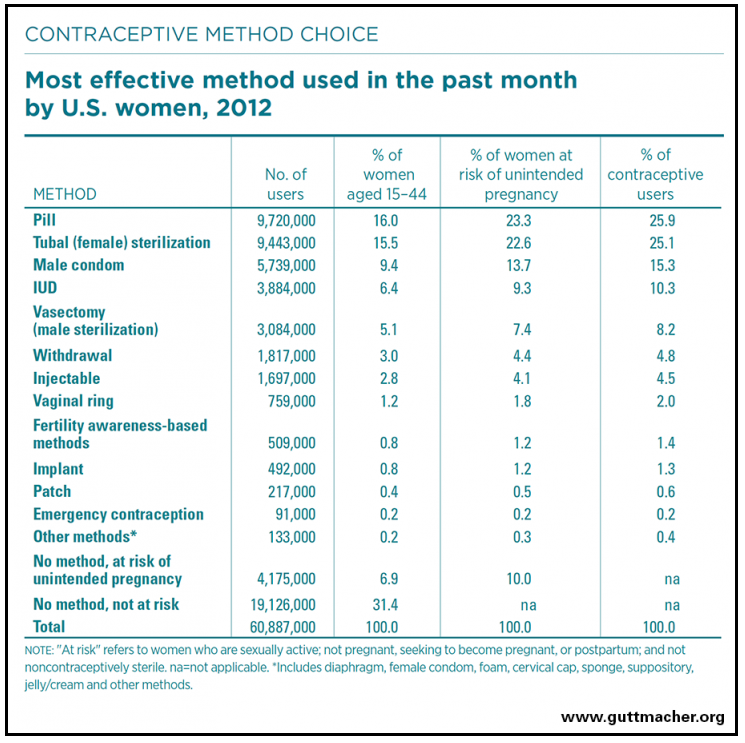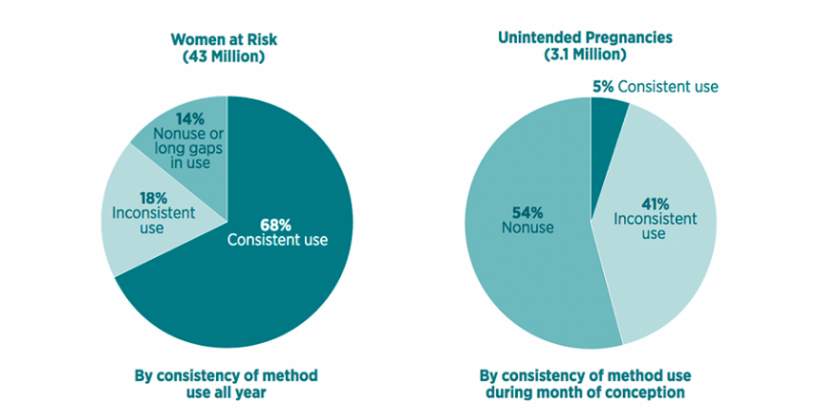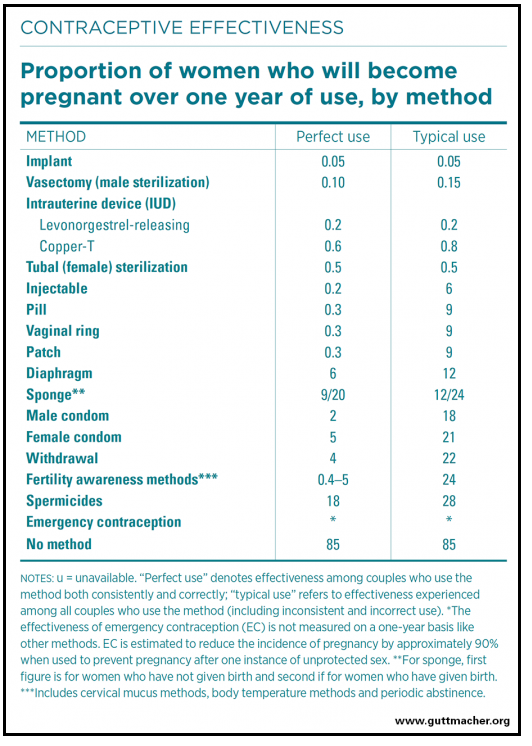The efficacy of birth control is not something that can be agreed or disagreed with. It is both a scientific fact and a key issue in women's health.
Birth control works. It can and does prevent pregnancy and the ability to choose if and when a pregnancy occurs can make an enormous difference in the life of any and every woman.
If we consult the data, the effectiveness of birth control becomes obvious. Comprehensive data from the Guttmacher Institute states that of the 61 million U.S. women in their childbearing years (15–44), roughly 43 million of them (70%) are 1) sexually active and 2) at risk of unintended pregnancy (meaning that they could become pregnant without effective contraception, but don't want to.)
Couples who do not use contraception have an 85% chance of experiencing a pregnancy over the course of a year. If that doesn't tell you, right there, how useful birth control is, I don't know what does. (1)
American women understand the message well. Roughly 62% of women (of reproductive age) are currently using contraception.
In the graph below, the contraceptive choices are shown in order of most to least popular. The five most popular methods in 2012 (and these are still true today as well) are the birth control pill, tubal sterilization (or having your "tubes tied"), condoms, intrauterine devices (IUD), and vasectomy. The other methods are used by less than 5% of people using contraception.

OK - so there are millions of people using birth control. But, regardless of the type that you choose, how well does birth control work in preventing pregnancy? Looking at the data below gives some clarity on the role of these methods, when they are taken together.
Of the 43 million women at risk of an unwanted pregnancy, 68% of women consistently use birth control. That same group accounts for a small sliver (5%) of unintended pregnancies. This group is represented by the dark green wedges in the pie graph below.
The much smaller group of women inconsistently using or not using birth control (32%) account for 95% of unintended pregnancies. These women are represented by the two lighter shades of green. Interestingly, the group of women who use birth control inconsistently account for 41% of unintended pregnancies, which is not that much less than not using birth control at all. So, the lesson is that a half-hearted attempt at using birth control is only slightly better than not using it at all.

Let's focus in on that 5% of unintended pregnancies of women consistently using birth control. These are in large part because the word "consistently" does not mean "correctly." Birth control., like most things, is typically not 100% effective even when used perfectly (although some are over 99%.) Operator error can be significant when it comes to contraception.
The failure rates of contraceptives are measured by the percentage of users who become pregnant annually.
However, there are two different ways to measure this - failure rates when the contraceptive was used consistently and correctly and failure rates that take into account mistakes (inconsistent and incorrect use.)
This distinction becomes a game changer when you look at the data. The pill has a failure rate of less than 1% when used perfectly (taking the pill everyday, at the same time and being aware of medications that may interfere with its effectiveness.) However, in reality the pill is 91% effective.
The male condom is 98% effective with perfect use. However, condoms are actually 82% effective due to an array of ways that operator error can be involved.
This issue is one reason why the intrauterine device is highly supported by the medical community. The IUD is the most effective, reversible contraceptive method available, due to the fact that there is negligible room for error. It is a small device implanted into the uterus. No need to remember anything or do anything.
More data on the effectiveness of different contraceptives can be seen below.

Taken together, these data indicate that there is simply no question as to the effectiveness of contraception. We are animals and the survival of the species is priority number one. Getting pregnant is surprisingly easy for some couples, but the desired number of children in the United States remains at two. Whether it's the pill, an IUD, condoms or any other method, birth control works and prevents a large number of unintended pregnancies. If used correctly, it would prevent almost all of them.
Notes:
With the additional statistic factored in that roughly 10% of couples are infertile, that suggests that fertile couples actually have about a 95% chance of getting pregnant.
References:
https://www.guttmacher.org/fact-sheet/contraceptive-use-united-states




